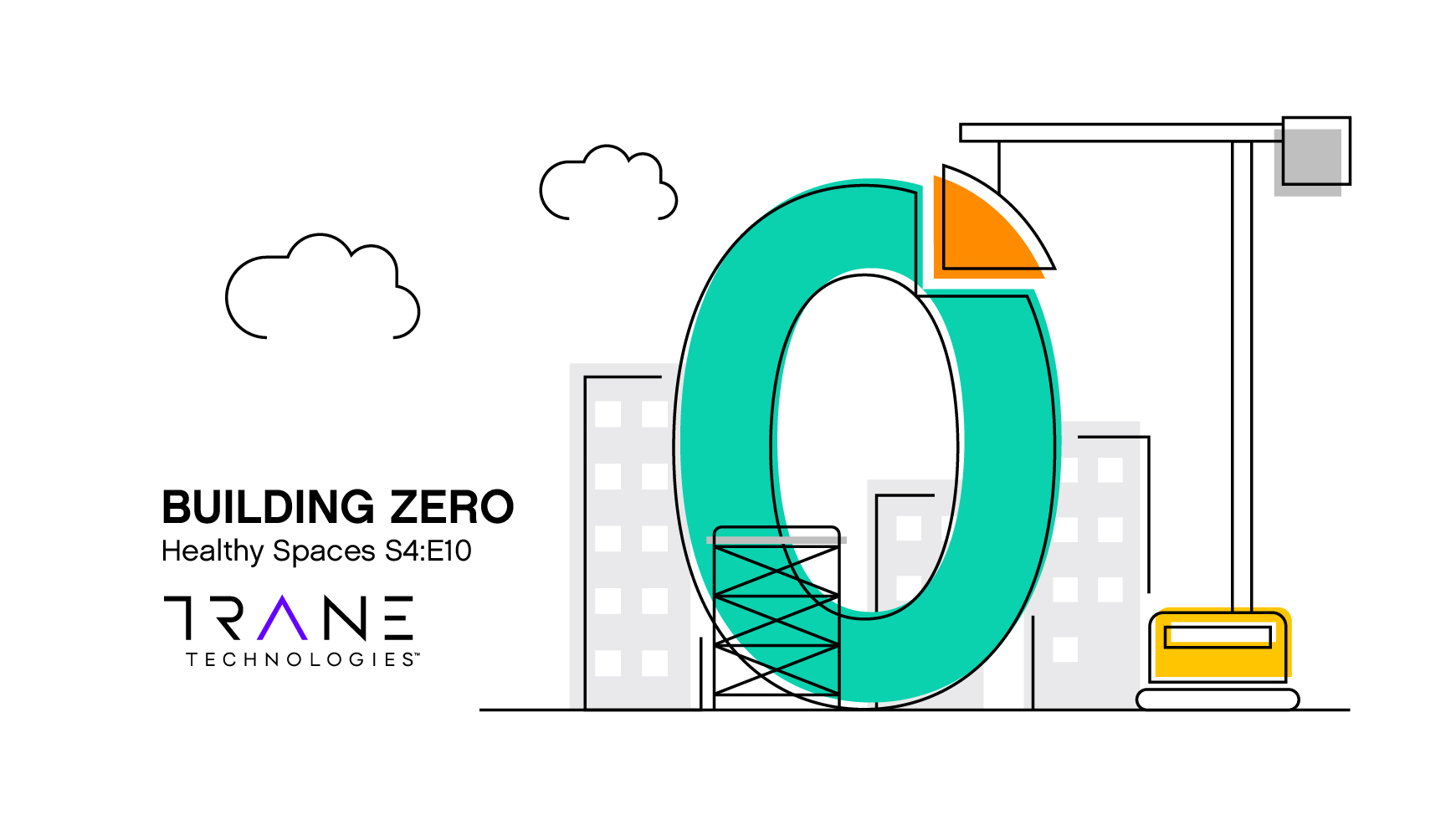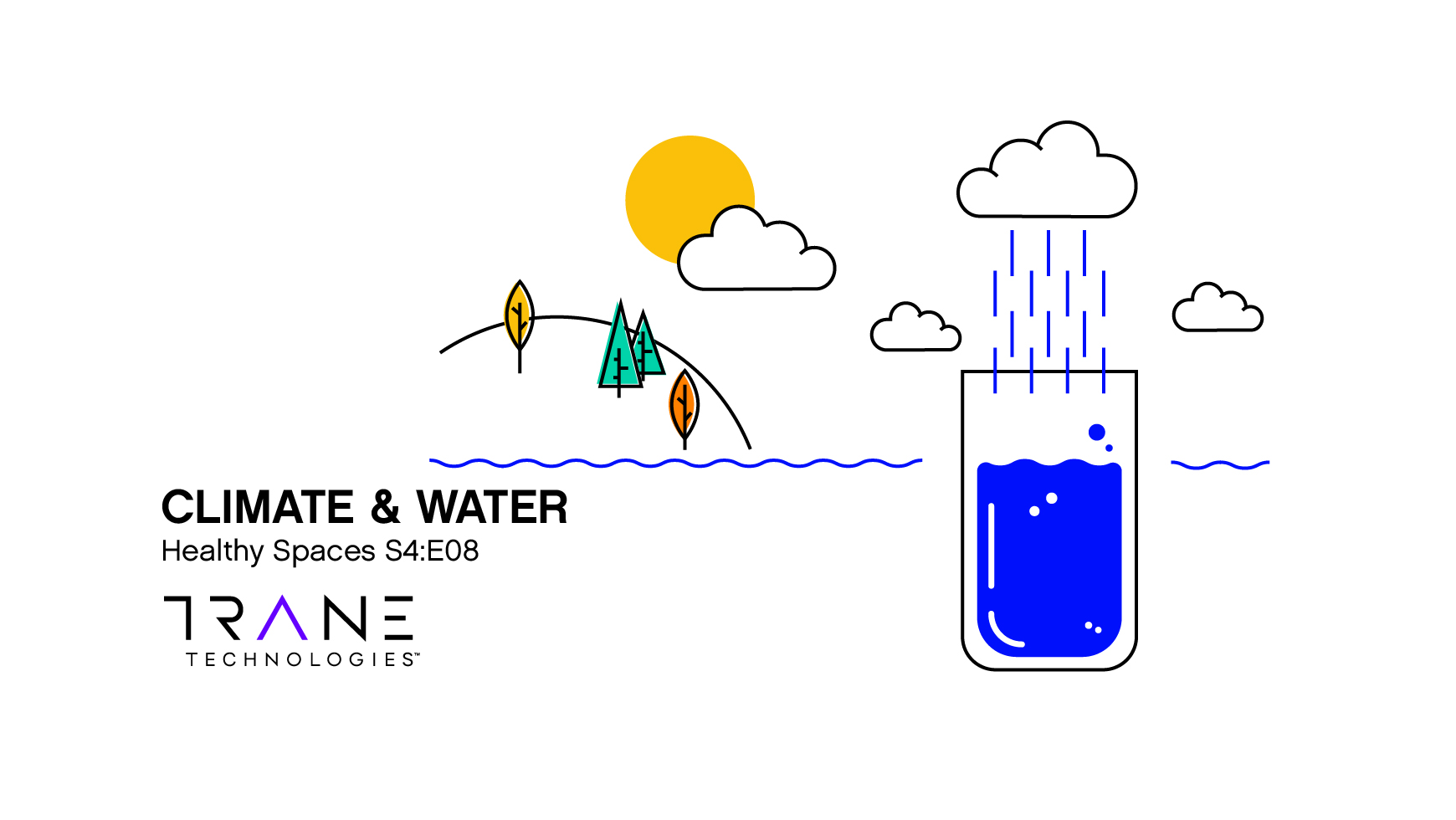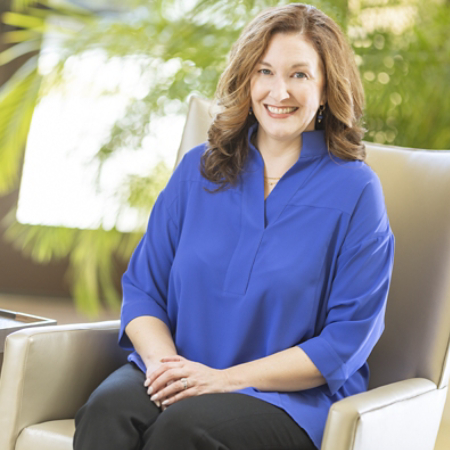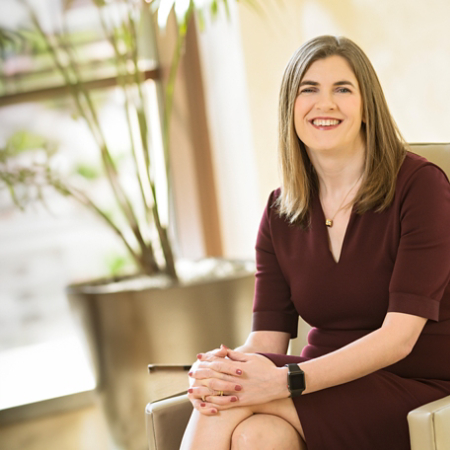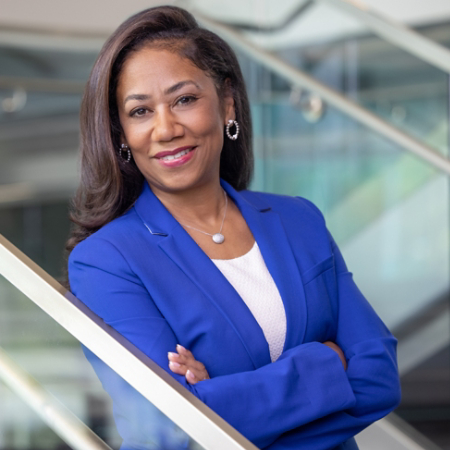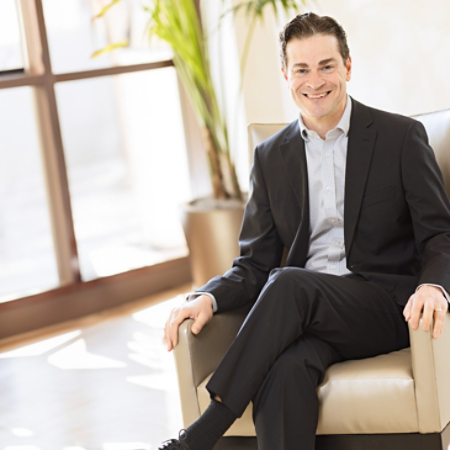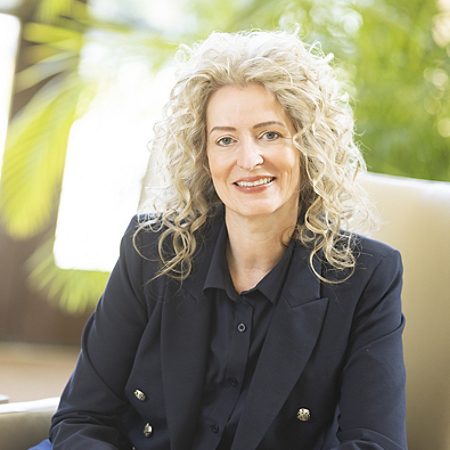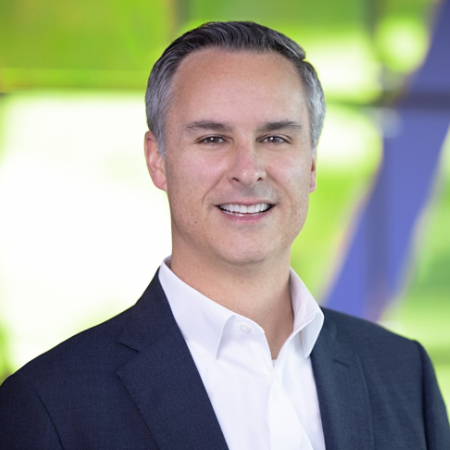[00:00:00] Dominique: Reducing plastic waste, shopping locally, using public transportation, even investing in more efficient and renewable technology in our homes. We all know that adopting new habits can be hard, but also go a long way to lower our carbon footprint. But achieving a net-zero economy? For that, change has to happen at a much broader scale. Buildings, road infrastructures, agriculture, tourism, they all need to be adapted, fundamentally changing the way that we live, work, and play. That's why many organizations are setting ambitious goals. But net-zero is a big challenge. And change is hard. And when things get hard, We could all use some accountability to stay on course.
[00:00:48] Avipsa: Global problems are immensely hard, but we can do hard things. We have done hard things. So, not only should your commitments be public, be ambitious, you should be able to, as a company, have faith in yourself to put your money where your mouth is. You have to invest in it. You have to transparently tell the public how much you're investing, why you're investing, and what you're targeting. And if we got that level of honesty, And if we had people then come and say, you know, we failed here because this was hard. That makes sense. That allows us to work together. That allows us as a society to figure out solutions because as we accomplish, it is challenging.
[00:01:33] Dominique: You just heard from Avipsa Mahapatra, Director of Climate Campaign at the Environmental Investigation Agency. And I'm Dominique Silva. And you're listening to Healthy Spaces, the podcast exploring how technology and innovation are transforming the spaces where we live, learn, work, and play. In today's episode, we're learning about the environmental impact of heating and cooling systems in buildings. And how innovation and policy reform are helping to achieve net-zero goals. Our conversation today was inspired by a nitty gritty discussion held earlier this year at South by Southwest, a conference which celebrates the convergence of tech, film, music, education and culture. During this event, our host, Trane Technologies Vice President of Sustainability, Scott Tew, speaks with Avipsa about the importance of transparency, as well as how companies need to be approaching their sustainability goals to reach net-zero. And with that, it's over to Scott.
[00:02:36] Scott: Cooling and heating buildings represents a huge opportunity, at least that's the way I think of it. And the opportunity is in reducing emissions. Whether you know it or not, 15 percent of the world's emissions today are related to heating and cooling buildings like this one, and your home, and your office. Part of that emissions footprint is from the electricity that's used to power those systems, and it is big. Electricity use in those systems is roughly 40 percent of a building's energy use. Nothing else compares. So that's huge. The other piece of emissions is we are in this very strange space where we use greenhouse gases to actually cool the building. in the form of something called refrigerants, which are regulated greenhouse gases. Uh, some of the world is moving towards natural refrigerants, and they're not the savior yet, uh, but we're trending that way. And, but that is why a company like Trane Technologies has to be focused on where we're headed around net-zero. We will not reach net-zero unless we change how we heat and cool buildings because it represents too large of an opportunity to ignore. And Avipsa, your link then as well around things like refrigerants, maybe you want to explain that piece.
[00:03:48] Avipsa: You all must remember CFCs, the chlorofluorocarbons that were used as coolants back in the 1990s. And they caused a hole in our ozone layer because of which they were globally banned. But then what happened? What did we have to use instead of CFCs? What ended up happening was that globally CFCs were replaced by mouthfuls. sounding refrigerants, hydrochlorofluorocarbons and hydrofluorocarbons, HFCs. These are super pollutants that do not cause a hole in the ozone layer, but that are extremely potent warmers of our planet. Those are hundreds to thousand times as bad for our climate as the equivalent amount of CO2. So what that means is that even by addressing the smaller seeming sector, which is the heating and cooling sector, we have an outsized influence in how much we can mitigate climate change. And so that is one of our sort of low hanging fruits, if you may. It's a fast action available to us while we as a globe are trying to find solutions, more sustainable solutions that take very long, such as, you know, decoupling from fossil fuels. But while we are doing that, this gets us time and gets us climate mitigation, which we cannot afford to lose while we figure out other stuff. To just put what we're talking about in context, the Montreal Protocol, which is arguably the most successful environmental treaty, is the only environmental treaty that every single country in the world is party to. In 2016, after many years of hard work, we got something known as the Kigali Amendment to the Montreal Protocol, which essentially means every country in the world signed onto this amendment to the Montreal Protocol. That they are going to phase out or phase down the use of these potent super greenhouse gases that are HFCs. And I promised you context. It's coming. So if the Kigali Amendment to the Montreal Protocol is successfully implemented, that shaves off about half a degree Celsius of warming. Which is a lot. So, does that answer your question?
[00:06:13] Scott: It does, thank you. The summer of 2014, ten years ago this summer, I was with a group of our company leaders and we were in a room to do a bit of a scenario assessment. It was really meant to say, uh, does everyone in the room believe this climate science that's out there? This was before companies began setting what I would call bold commitments around reducing emissions. And we were, we asked ourselves a couple of questions. One was, do we believe the science? And if we believe the science, what does that mean to our company strategy going forward? Because we knew that if we answered, yes, we believe it, it wouldn't necessarily mean that they too meant we were going to talk about what do we do to change the portfolio. And, and we left that meeting and in early 2015, we announced the first round of our climate commitments. That one included a, a 500 million U. S. Research Fund around next generation refrigerants. It also included, uh, some, at the time, very bold commitments around reducing emissions. A 50 percent number was, was out there as a really large number related to refrigerants, related to our product impacts. And we didn't know what we didn't know that day. We learned it over the next couple of years. We learned that if you want to fire up your employees and, and really supercharge innovation, and you really want to open up the doors to partnerships. mentioned that you have 500 million and that you're about to upgrade your facility so you almost dare your employees to watch you put your money where your mouth is and begin to change who the company is. And we successfully did that. It's easier to tell that story looking backwards than, than where it was back then. However, today, where, where are we today? We are, we were company number 11 to have a science based validated target by the SBTI that's a net-zero target. So that's company number 11, and it's still only a handful of companies have gone through the rigors of having their net zero plan validated. I was looking at a BCG study that came out in December with some startling things about how insufficient the plans are currently around net zero. The numbers I wrote down earlier today, only 35 percent of the countries of the world has made a commitment around reducing carbon that might get them on the path to net-zero. Less than 20 percent of the corporations of the world have made a commitment that puts them on the right path to net zero. These numbers are startlingly low. And so, with that, Avipsa, so I was wondering, what's your, what are your views about the role of transparency?
[00:08:47] Avipsa: Yeah, and I'll take a step back, Scott. Thank you for introducing that topic. And it's so refreshing to hear someone, A, admit to why this needs to be done, but also admit that it's hard. And I'll go back to the Montreal Protocol example to say, yes, global problems are immensely hard. But we can do hard things. We have done hard things. So, even though the transition will be bumpy, even though getting to net-zero will be difficult, there is simply no other option. So, I think the real question is, what kind of commitments are we making? Are these commitments measurable, are they transparent, as you said, and are companies being accountable about actually meeting their commitments, walking the talk? And I'll give you an example of the cooling world. So back in the, not the previous administration, obviously, but in the administration before that, a bunch of companies from the cooling and heating sector got together. At something called the CEQ, which is a, let's call it a climate portion of the White House, and made a lot of commitments. And this is 2008 ish is what I'm talking about, and there were two rounds. We went back last year to check how much has been achieved. And you won't be surprised to hear a lot of them got failing grades. So, it's not just enough to commit to things. First of all, your commitment has to be ambitious. It has to be additional. Don't put your business as usual plan on a piece of paper and tell me that's your climate commitment. So what you bring up about transparency is such an important point because not only should your commitments be public, be ambitious, you should be able to as a company have faith in yourself to put, again, put your money where your mouth is. You have to invest in it. You have to transparently tell the public how much you're investing, why you're investing, and what you're targeting. And if we got that level of honesty, and if we had people then come and say, you know, we failed here because this was hard, that makes sense. That allows us to work together. That allows us as a society to figure out solutions because as we it is challenging. But if you're not transparent, about your commitments. If what you're trying to do really is greenwashing, I'm sorry, you've left no room open for dialogue and for us, our faith as a society in corporate action. And, um, since I mentioned challenges in doing that a few times, maybe I should pause and ask you, Scott, Um, since you have some targets and you've put some money there, what are some challenges you've faced in doing this?
[00:11:43] Scott: Yeah, it's a fair question. I mean, there are challenges. So let me acknowledge that first. We might have a net-zero commitment that you see on our website, but there are people like me in the background that are really struggling every day to figure out how do we identify and overcome the challenges. And there are big ones. The energy grid has been under transition for at least 15 years. Texas is like centerpiece of it. The state with the largest renewable energy of any other state by far, across all forms of renewable energy. The other one is EV. The EV transition is certainly underway for the last, I'd say, eight years. In fact, we know that that one has been very bumpy for a lot of reasons. Infrastructure reasons, cost reasons, reliability reasons. Those are two bumpy transitions that are underway. The next big one is the built environment buildings like this one. We cannot get to net-zero until we figure out how to take these buildings and make them much more efficient, much lower on the emissions footprint than they are today because they're horrible. This is the opportunity. And that one is complicated. That's what you were asking about. One of the complications is we don't have the data. I was talking to somebody before the session, Who is, uh, working to help companies understand how they get the data that we need. We can't make and manage our emissions footprint until we have better data. Somebody's got to help us understand all types of other things. And we really don't have time for us to measure every square inch of this building to understand it. We need smarter technologies. and new approaches to do that.
[00:13:21] Dominique: There is no shortage of challenges in reaching net zero emissions. For the built environment, it could be that smarter technologies and better data provide part of the answer for overcoming them. But there's another key element that will help individuals and organizations reach their emissions targets, and it's not futuristic tech. In fact, it involves technology that has been around for decades.
[00:13:50] Avipsa: You talk about buildings and, um, a common person, well, any of us really, at least I don't know about you, I did not have a choice in choosing what kind of technology goes into my house for air conditioning, right? And I would imagine that a lot of people, especially those who live in rental apartments may not have that choice. So, what does that mean in terms of who are your clients, and what do they do, and how can, you know, somebody understand what is happening, um, in, in some of this work that you're doing?
[00:14:23] Scott: Yeah, I mean, that's one of the big things we're up against. There's a lot of people that just don't know what they don't know. They don't know what's available now. The technology and the solutions have advanced so significantly in the last five years that if you've not done something recently, in either your home or the building that you work in, then you're missing out on some solution that could be reducing energy use and that could be reducing the emissions footprint. I'm 100 percent positive in that. That's unfortunate. Some of that's just not knowing what you don't know. The other is just there's some misinformation, too. Some of the solutions that's out there in the marketplace are, there's just myths that continue to have a stronghold. Some of the myths around heat pumps, for instance. Heat pumps have been around for decades. People are talking about them now as if they're some, uh, new, uh, thing out of a science fiction, uh, movie. They're not. Well, they've come back, though, and, and, and the way they've come back is it's the solution for actually electrifying the heating of buildings. Ninety seven percent of heating in the world is still based on fossil fuels, which means that we're still burning things to heat ourselves. Just like we did in the cave 10, 000 years ago. It's high time that we move away from burning things to heat our homes and heat our buildings we work in, when we no longer have to. Yet, there's myths out there about these technologies, like they don't work in cold climates. They don't work on hot summer days in Texas. All these things are myths. We're selling them in Canada. We're selling them in Minnesota. We're selling them in the Nordic countries of Europe. And everyone is extremely pleased. And we've moved completely away from fossil fuels to heat the buildings. So all those things are possible. The issue is, it's moving too slowly. If anything, I would say it's just, the transition is just too slow. And I'm not sure to your point about the 1. 5 degrees, that we can wait much longer for this transition to speed up. Yeah,
[00:16:19] Avipsa: and thank you for bringing up misinformation. Because I don't think we have enough time for me to go over all my thoughts and feelings about that. I'll just give a quick example. I grew up in India back in the 1990s with some of this technology that you're talking about, which is now being called new technology, but essentially it is using a refrigerant that is not fluorinated, so it's not synthesized in the lab, does not damage the ozone layer, and doesn't also damage the climate because this particular refrigerant known as, zero or one or, you know, very low global warming potential GWP, which is a measure of how bad something is for the climate. So, back in the 90s, going back, I grew up with that refrigerator. When I came to the US, all of the refrigerators were using HFCs. And I was like, wait a minute, this doesn't make sense. And I kid you not, the American companies, their argument was, Americans need bigger fridges. And so bigger fridges need a different kind of refrigerant, otherwise it's not safe. That's interesting because the same kind of fridges are everywhere else in Europe and starting in Africa. And what we did was we compared, say, Company A, I won't name any names, Company A was producing refrigerators in Europe that were the same size, but using the right kind of refrigerant, but not in the U. S. So, talk about misinformation. That has now, we called it out, that has now changed. You can walk into your Home Depot or Lowe's and find fridges in the U. S., including in, you know, any of your newer homes, if you are in a newer home, that do not contain the super greenhouse gas HFCs anymore.
[00:18:03] Scott: Let's talk about accountability. Next you'll get a, you'll get another peek at our company's view of net, uh, net-zero future. We have been at least once a year, to your point, putting out our latest thinking and data around our progress so far, as well as what else is out there that we're looking into that we believe will be important to us. Last year, we had a really cool map. It was our way of actually showing a roadmap to net zero that included some pieces of net zero that were, that we knew we would have to understand more, things like carbon capture, that we don't yet have capabilities inside the company. Well, we placed them there. We placed them in certain years because our team is looking into how do we do that and how do we either attach it to our existing portfolio and solutions? Do we integrate it? Do we go out and find a partner for it? Is it part of an acquisition of the future? There are a lot of things there in the map. And some of those things we know really deeply, and we have data on them, to your point. And some of those things we're just acknowledging will be part of our future. And we have teams who are looking into that now. And so that team does that, but they also do some fun things internally for us. So they can model sort of a eat this, not that for our, our product managers. So when we're the customer, we can actually showcase where if customer A chose this system versus this system, they can immediately understand what the impact would be on their emissions footprint of the customer, uh, at the project level. That's great. We, we, so we have those capabilities and I would say that that's part of our future because we have to have some type of crystal ball to understand how much do we invest in this today versus maybe wait until the technology is more mature? What about your world of accountability?
[00:19:51] Avipsa: So what I would say is that I would want to go back to this example where, okay, we don't have a choice. Clearly, companies and sometimes policymakers are making the choices for us in terms of, let's say, air conditioning. So what can we do? How many of you try to bike to a grocery store, take your own tote bag, ideally reusable, and you know, when you go into the grocery store, you try to pick the organic stuff, the thing that is not being flown away from far away, and you're trying all of this because you think this is good for climate. What a lot of people don't understand is that even today in most supermarkets in the United States, you open that refrigerator to take out your frozen pizza or whatever, you kind of undid all the climate benefit you tried to do. And we as customers don't know or don't see what's going on. These gases that are being piped through all of the refrigerators you see in a supermarket are damaging to the climate, can be leaking in high amounts. But what happens is that because these are colorless, odorless gases, they're just hiding there or sitting there and people don't know about it. But we have something called the Climate Friendly Supermarkets. org, and what we have there is a map of the world, and you can put in your zip code and find supermarket stores or, you know, grocery stores that are using the right kind of technology, where when it leaks out, if it leaks out, it's not going to be several hundreds to thousands times bad for the climate than CO2. And if your supermarket is not on the map You can't blame us because this is an interactive crowdsource map. So we encourage you then to go into your supermarket and we teach you how to figure out what refrigerant they're using. It's so simple.
[00:21:45] Dominique: It can be frustrating to think that our environmentally conscious shopping decisions might be sabotaged by another link in the supply chain, but by staying informed, we as individuals can make better decisions to make sure that our efforts. Don't go to waste. And whether it's an individual or a corporation that wants to reduce their environmental impact, the best thing to start doing better is to look at the data.
[00:22:15] Scott: Well, obviously I mentioned that we transport the majority of the world's fresh food. Yes. And we, and we keep it cool on the way to the grocery store, which is also very important. Reducing food loss also is an emissions driver. And one of the things you mentioned was the data sort of comparing, comparing the people want that. I'm in a company where we all want that too. I would say from the top to the bottom, from the very brand new engineer that's just joined our company. And I talked to one of those just last week who was asking me questions about data. Where's the data? Who had the data? And she wanted to understand how we calculate certain things. The very detailed, she came in the company with lots of questions all the way to the CEO who, uh, I was in a discussion with just recently about a new area that we're trying to calculate in our value stream, sort of with suppliers. And the question was around credibility. He actually asked me, How credible is this data? It's like all modeled. Because some companies, like the one that I'm in, have a culture of, We want to make sure that the data we're using is as good as we can find.
[00:23:15] Avipsa: You would think that's normal across companies, but it's always But
[00:23:18] Scott: it must not be, because we have companies, even around our sector, who call us, and they ask questions around, Are you calculating these things that are in your reports? And, you know, we do share that, so if you would like to know, feel free to reach out to us online. I think my email is actually on the company website, so you can find me. And we're happy to share how we're making those calculations, because we think that's important. One is the sharing of the knowledge, and two is we do think that using as much good and real data is part of us getting to net-zero. We will not get there. If it's not science based, we will not get there. If it's not measurable, if it's not accountable, like you mentioned, and if it's not based on something. I know some companies that are still using a baseline year of like 2006. And that's laughable to me. I think they should be called on that. And I think we should have baselines that are very close to when targets are set. I also think that you should be very public with your data and they should be based in science. And there's a lot of ways to do that. We use the science-based targets framework. There are other ways to do that, but we think it's really important that they are. Why aren't others doing that though? You, you have a lot more visibility and how other companies are, what they're saying and how they're, how they're treating data. What are your thoughts there?
[00:24:35] Avipsa: Yeah, I think unfortunately the market has not pushed out. Let's say rewarded. The market has not pushed out companies that are trying to wait to be pressured in some way, be it regulatory or be it through people, or be incentivized. You know, I hate to use the cliched carrot and sticks, but that's really a lot of companies as people you see often who are like looking at a short term, want to make a quick profit, and unless there was an EPA action, or there is a… We did this with one company where we got 200,000 people to reach out to the CEO and say, this is not acceptable to us.
[00:25:14] Scott: 200, 000?
[00:25:16] Avipsa: Yeah, and I can name it. It's public. You can look it up. It's Walmart. And now they are changing. Which is, you know, you can imagine the kind of effect that has on the supply chain. So, of course, I encourage everyone in this room to talk to whoever they can to about this. But also in terms of what you asked about why companies are not. I don't think it's necessarily not having the data sometimes, right? I understand and absolutely agree with the idea that it has to be real data, uh, but at the same time, you know, we send a man to the moon, we have electric cars, we can, it's not that hard sometimes. And I think it's also this, um, willingness, I would say, or the political will. And sometimes just having this more, you know, being a smart company, just not all companies are smart, quite frankly, sorry to say that.
[00:26:14] Dominique: A big thank you to Avipsa for joining us on today's episode, where we discuss the importance of transparency and accountability in the pursuit of net-zero. At Trane Technologies, we believe that every job is a sustainability job. Every role provides an opportunity for impact. That's why each week on the podcast, we'll feature how someone is building healthy spaces in their organization or community. This week, we're sharing a submission from Rebecca Verdon, a packaging engineer for Trane in La Crosse, Wisconsin. She shares that when it comes to product distribution, it's important to choose materials that protect both the goods and the environment. So Rebecca is helping Trane to build healthier spaces by improving the sustainability of our packaging. Together with her team, she ensures that the way we package products aligns with our environmental goals. Rebecca also takes every opportunity that she can to talk to consumers, informing them on recyclability as well as waste streams. Whether she's wearing her hat as a packaging engineer or as a citizen, Rebecca is always on a mission to educate the public and encourage good recycling habits through clear and readable labeling. In her community, Rebecca is also a volunteer at STEM based events for local youth. She hopes to inspire kids, and especially young girls, to pursue careers in STEM. Well, Rebecca, you inspired us today. Thank you so much for writing in, and keep up the good work in La Crosse. Would you like to share how you're building healthy spaces too? Well, visit us at tranetechnologies.com/healthy spaces podcast to share your story. That's all for this week. Thank you for listening to the healthy spaces podcast, where we explore how climate technology and innovation are transforming the spaces where we live, work, learn, and play. If you want to find out more about our conversation today, make sure you check out the show notes. And remember to rate and review us in your favorite podcast app. That's it for today's episode. We'll see you next time.



